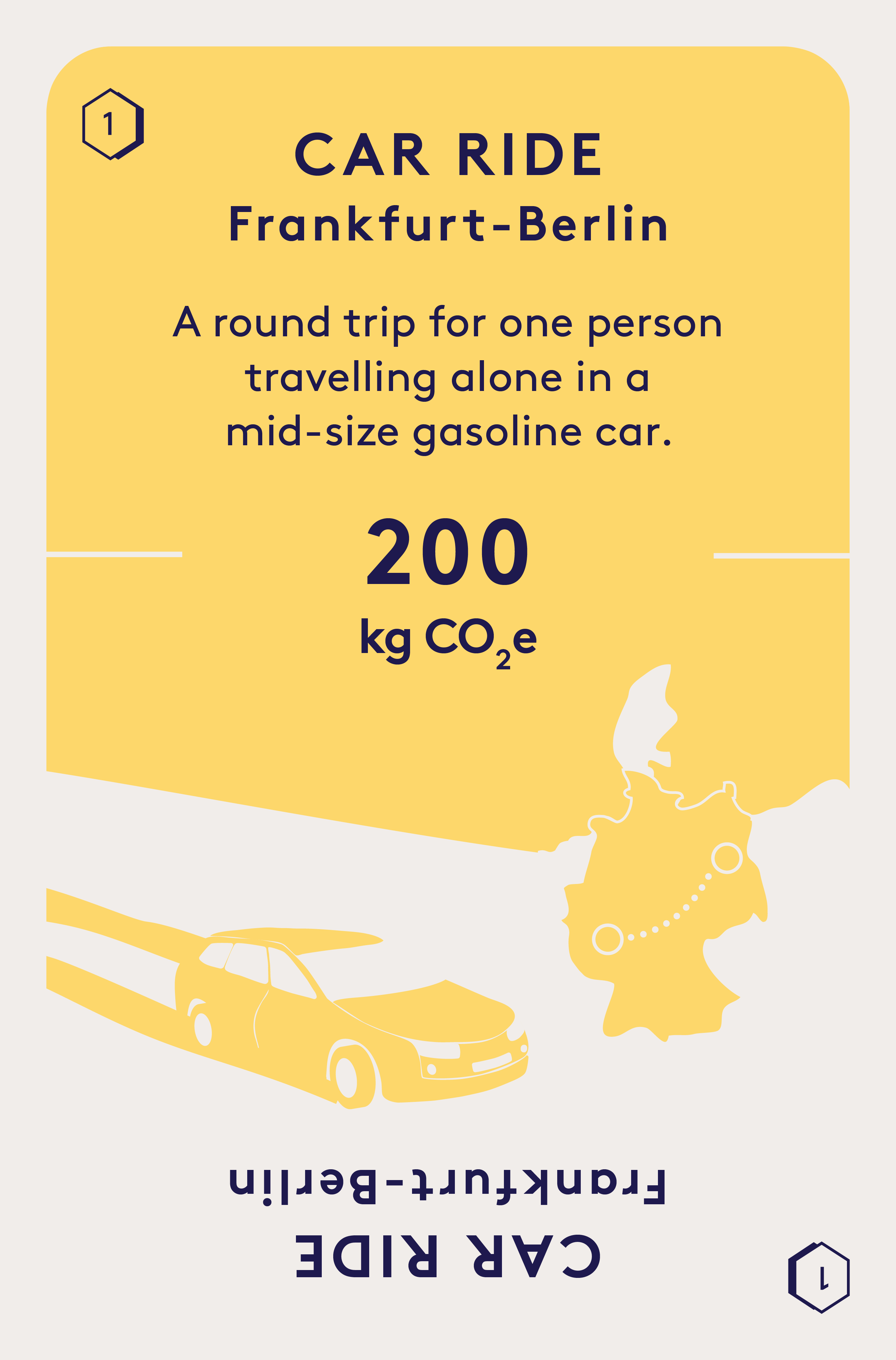CAR RIDE
Frankfurt-Berlin

FOLLOW OUR CALCULATION
Click the expendable headlines to look at each step of the calculation.
To calculate the greenhouse gas emissions, we have included the emissions from the consumption of fuel (gasoline) and the emissions from the production of the car. The following data have been used to calculate the emissions from the consumption of gasoline:
- Distance between Berlin and Frankfurt, one way: 550 km
- Fuel consumption of the car: 0.053 liters per km (average for highway driving)
- Emissions from gasoline combustion: 3.11 kg CO2e per liter.
The amount of fuel consumed is calculated by multiplying the fuel consumption of the car by the total distance traveled. The calculation shows that the trip consumes 58 liters of gasoline (550 km × 2 × 0.053 liters per km).
The greenhouse gas emissions from gasoline consumption are calculated by multiplying the fuel consumption by the emission factor for gasoline combustion. The calculation shows that the emissions amount to 180 kg CO2e (58 liters of gasoline × 3.11 kg CO2e per liter).
The emissions from the production of the car are calculated based on the weight of the car, its lifetime, the distance traveled, the materials it is made of and the emission factors for the different materials. The emission factors represent the amount of greenhouse gasses emitted during the extraction and enrichment of 1 kg of material. The following data have been used:
– Car lifespan: 16.5 years (average value for the Swedish car fleet based on national statistics).
– Average distance traveled per year: 12 240 km (based on data from Statistics Sweden, 2016). Note that this distance includes all trips, not just the round trip between Berlin and Frankfurt.
– Weight of the car: 1 360 kg
– Material composition of the car (shares of total weight, based on data from UCS, 2015): carbon steel 61%, stainless steel 12%, plastic 11%, aluminum 7%, glass 3%, copper 2%, synthetic rubber 2%, and other materials 2%.
– Emission factors for the materials that the car consists of: carbon steel 2.2 kg CO2e/kg, stainless steel 4.5 kg CO2e/kg, plastic 2.5 kg CO2e/kg, aluminum 7.3 kg CO2e/kg, glass 0.9 kg CO2e/kg, copper 5.8 kg CO2e/kg, and synthetic rubber 1.9 kg CO2e/kg. For the other materials, we have used an average emission factor of 3.4 kg CO2e/kg.
The emissions to produce a car are calculated by multiplying the weight of the materials contained in the car by the emission factors of the corresponding materials. The calculation shows that a newly manufactured car has a carbon footprint of 3 992 kg CO2e (note that we have included more significant values in our calculation model, so this figure differs slightly from the result obtained if the calculation is made using the data given above).
This entire amount of emissions should not be included when calculating the emissions of the round trip, but only a proportion corresponding to the actual distance traveled.
In total, the car travels 201 960 km during its lifetime (12 240 km per year × 16.5 years). The 1 100 km round trip between Berlin and Frankfurt thus represents 0.54% of the total distance traveled by the car (1 100 km/201 960 km). An equal share of the emissions from the manufacturing process is attributed to the round trip, that is, 21 kg CO2e (3 992 kg CO2e × 0.54%).
The total emissions for the trip are calculated by adding the emissions from fuel consumption to the emissions from the manufacture of the car. The calculation shows that the round trip between Berlin and Frankfurt causes emissions of 201 kg CO2e (180 + 21 kg CO2e), which has been rounded to 200 kg CO2e on the card.
See more card calculations: